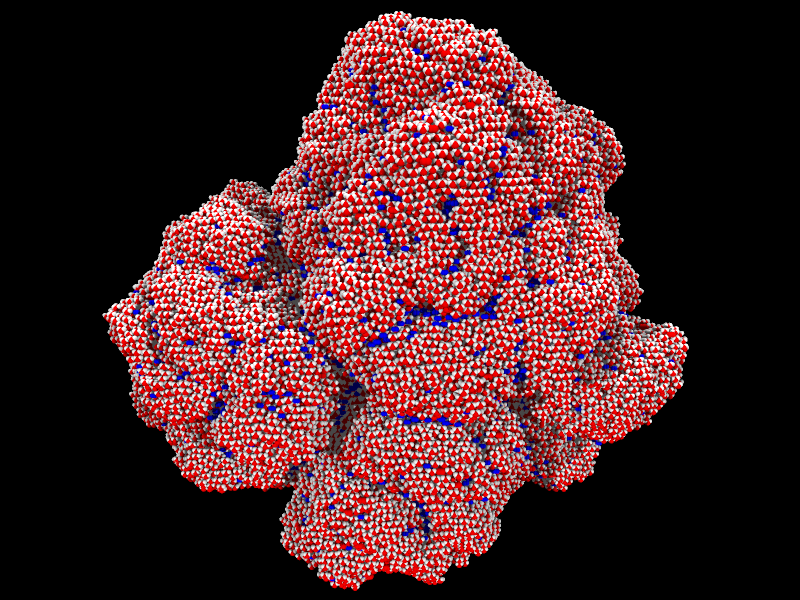The Garrod group's MIMICK model (Model for Interstellar Monte Carlo Ice Chemical Kinetics) uses an off-lattice, microscopic Monte Carlo kinetics approach to simulate the formation and porous structure of amorphous ices, such as may be found in the interstellar medium. MIMICK can simulate ice formation both through direct deposition and surface chemistry of deposited atoms and molecules.
The preliminary model was presented by Garrod (2013), who used a simple water network based on the accretion of hydrogen and oxygen atoms from the gas phase onto an idealized, simulated dust-grain.

The image above-left show the ices formed under dense cloud conditions; the image on the right shows a cross-section through the same ice. The ice structure shows significant porosity. Trapped H2 molecules are shown in blue. The porosity of the ice is strongly dependent on the density of the gas from which the H and O atoms originate. The more rapid accretion of atoms at high gas densities gives oxygen atoms less time to diffuse on the surface and there to find strong binding sites, before they are hydrogenated to water by reactions with highly-mobile H atoms. When two H atoms react together on the surface to produce H2, this molecule can diffuse rapidly on the surface before it desorbs back into the gas phase. Some of these H2 molecules become trapped in strong binding sites, which tend to be prevalent in the cracks and crevices of the predominantly water-ice ice surface.
New simulations using an updated version of MIMICK include a much larger reaction network, which includes all of the major constituent molecules observed in interstellar ice, including H2O, CO, CO2, CH4, NH3 and CH3OH. The image below shows new simulations for a range of dust temperatures and gas densities. Dust temperatures increase from left to right, 8 - 12 K. Gas densities range from 2x104 cm-3 (top row) to 2x107 cm-3 (bottom row).

